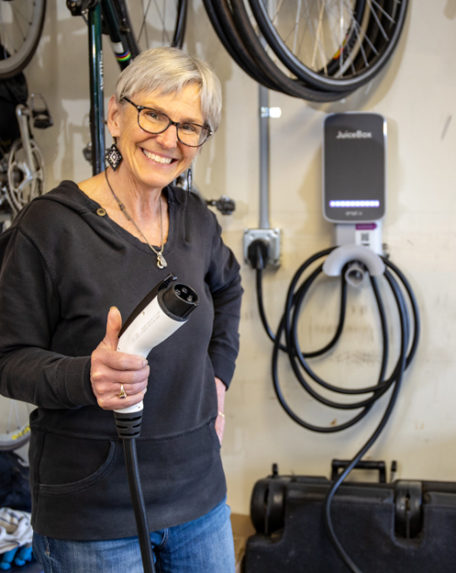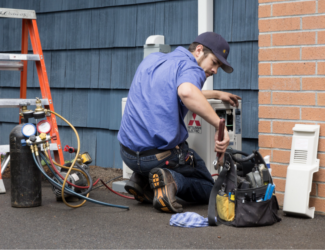
How FlexTime works
Although this pilot is no longer accepting participants, it’s a great example of a possible future energy program.
FlexTime customers:
- Trim winter energy use from 7-10 am and 5-8 pm
- Save money by shifting energy use to nights and weekends
- Enrolled eligible devices in the program to save energy and money

I’d never really thought about peak energy demand.
Now I start my dishwasher later at night instead of right after dinner. I also do my laundry on the weekends, and charge my electric vehicle at off-peak hours.
Customer Testimonial – Jenny L.
FlexTime customers pay less on nights & weekends
FlexTime participating customers take advantage of lower rates on nights, weekends and holidays year-round to help lower their bill. During weekends, holidays and nights from 10 pm to 6 am, participants save more than 20% off their typical energy rate, which is 2.4 cents less for every kilowatt hour they use.
More about the FlexTime pilot
Program details
FlexTime pilot participants earn incentives and save money by using energy when it’s less expensive, including a lower rate on nights, weekends and federal holidays. Participants operate under a new fixed-rate design year-round that rewards them to use energy at off-peak hours and avoid using energy at on-peak hours. During the winter (November–February), on-peak hours will be billed at a higher rate.
The peak rate will be applied when the PUD’s grid sees high demand during weekday winter mornings 7 to 10 a.m. and evenings 5 to 8 p.m., from November 1 through February 28. There are two winter seasons during the pilot. In all other months, there is a discount and standard (or mid-peak) rate, but no on-peak rate.
What are Time-of-Day Rates?
The FlexTime rate plan offers participants a tiered and seasonal rate plan with different rates for electricity based on the time of the day it is used. Participants will receive a 20% discount during nights, weekends and federal holidays, while being charged a peak rate during three-hour periods in the morning (7 to 10 am) and evening (5 to 8 pm) on weekdays in the winter (November through February). Discount and peak hours are already defined, so it’s easier to make little tweaks that add up to big annual savings.
How do participants save money on FlexTime?
Participants save money when they reduce energy use during higher-priced peak periods and shift it to times when the rate is discounted. They can turn off lights, appliances, TVs and computers or unplug electronic devices and chargers when they aren’t in use. Delaying the start time of their dishwasher, clothes washer or dryer until after the peak rate period passes is another way to save.
For participants who enrolled a thermostat, their device will help them reduce energy use by adjusting the temperature setting, sometimes even pre-warming or pre-cooling the house to help them ride through the peak rate period in comfort.
Are there safeguards for customers who use too much energy during on-peak hours?
The PUD offers a break-even guarantee that eliminates the risk of participating through both winters. The PUD guarantees FlexTime participants will save money compared to what their bills would have been on our standard residential rate by June 30, 2023. If they don’t, we’ll credit them the difference.
Want more details? Check out the FlexTime FAQs >






